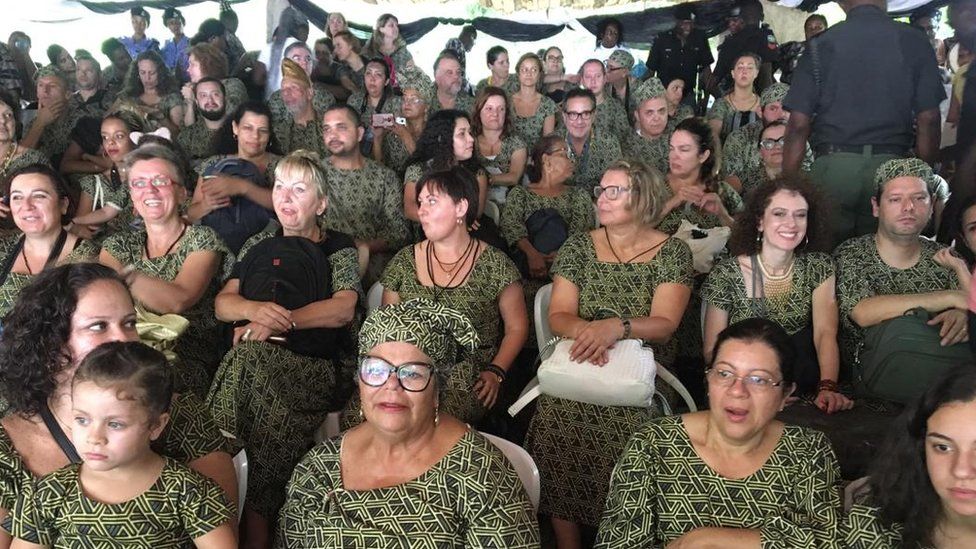Every year in Osogbo, Osun State, Nigeria, there is a festival called Osun-Osgobo that honours the fertility goddess of Osun. The celebration updates the agreement between humanity and the divine: in exchange for Osun’s grace, the community promises to protect her Sacred Grove. This ritual is a component of the rich Yoruba indigenous religious tradition, which dates back to the Yoruba people of West Africa and is now one of the ten most widespread worldwide, with over 100 million adherents from countries like Cuba, Brazil, and Uruguay.

In the Nigerian state of Osun, just outside the city of Osogbo, is a sacred grove known as Osun-Osogbo Grove, where the yearly festival usually takes place, whereby thousands of devotees are present to observe the festival in commitment to the traditions. However, there are also those who attend the festival for tourist reasons from all around the nooks and crannies of the world.
One of the last remaining sacred forests that originally bordered the margins of the majority of Yoruba cities before substantial urbanisation is the Osun-Osogbo Grove, which is many centuries old. The Sacred Grove was listed as a UNESCO World Heritage Site in 2005 in consideration of its importance to humanity and its cultural significance.
The Osun-Osogbo Area was profaned during the 1950s as traditional duties and customary responsibilities diminished, shrines were disregarded, and priests left the grove. Before an Austrian woman named Susanne Wenger (1915–2009) helped to restore historical protections, prohibited activities including fishing, hunting, and tree-falling in the Grove were carried out without discrimination.
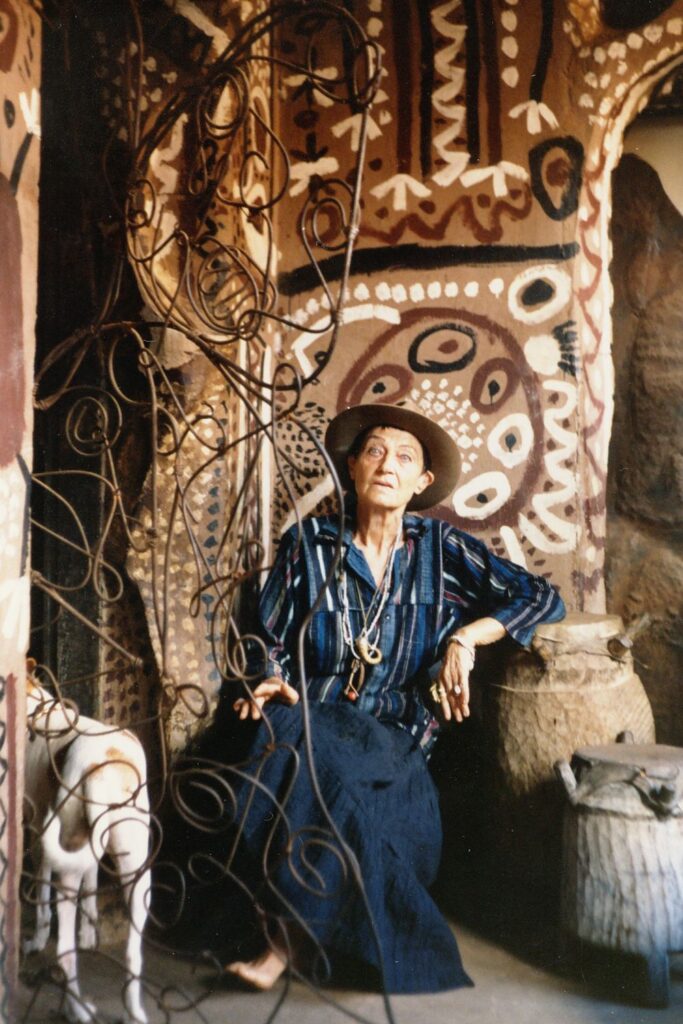
She flourished thanks to the encouragement and assistance of the Ataoja (the reigning king at the time), as well as the help of the concerned locals. Wenger “founded the New Sacred Art movement to confront land speculators, fend off poachers, safeguard shrines, and start the lengthy process of bringing the sacred site back to life by reestablishing it as the sacred core of Osogbo.” Wenger later earned the title “Adunni Olorisha” in recognition of her dedication to the grove’s gods and her diligent caretaking, a befitting title that accommodates her position as an Initiate of the Saponna cult and also a high priestess of the Osun cult.
History of the Osun-Osogbo Festival
A history of more than 700 years is attributed to the Osun-Osogbo Festival. The celebration of this holiday has its roots in an ancient occurrence. In the past, a group of emigrants headed by the legendary hunter Olutimehin chose to make their home on the bank of the Osun River in order to avoid starvation. Olutimehin was standing by the river when Yeye Osun, the river goddess, asked him to direct people to a unique location (the present-day Osogbo town). The goddess asked for an annual sacrifice in exchange for which she would protect the people and provide them with wealth. The idea was approved by the group, and the Osun-Osogbo Festival is still held every year as a way to honour the annual sacrifice to the goddess of the Osun River.

The Celebration Rituals
In modern times, August is a month of festivities for the inhabitants of Osogbo land, which includes the customary city cleaning and a cultural reunion with their ancestors, the Osogbo Kingdom’s founders. The Osun-Osogbo Festival itself lasts for two weeks. The 500-year-old sixteen-point lamp known as “Ina Olojumerindinlogun” is lit after three days of Osogbo’s customary washing, known as “Iwopopo.” Then comes the “Iboriade,” a gathering of the Ataojas of Osogbo’s former thrones for blessings.
A vast crowd gathers for the festival’s grand march to the shrine in the sacred grove. The event is made more pompous and colourful by the use of drumming, dancing, musical performances, elaborate costumes, Yoruba language speaking, readings of praise poems, and other activities. The sitting Ataoja of Osogbo, a ritual performer known as the Arugba, and a group of priestesses oversee this occasion, which recreates the first encounter between Oluwatimilehin and Yeye Osun. A young woman from a royal family portrays Arugba, who offers the sacrifice to the god.
Some other activities that take place during the festival are “Bibo Ade Oba Osogbo“, which is meant to honour past kings of Osogbo; and the “Dida Ifa Arugba“, where a young virgin woman (Arugba) of a royal lineage offers sacrifices to the deity, which will be followed by the “Dida Ifa Arugba”, while the festival will end with the “Osun Ajigun”.
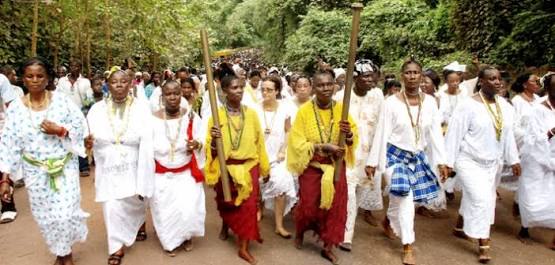
Drinking from the Osun River
The devotees of Osun are always found drinking the water from the Osun river. The devotees and visitors, who troop out to the riverside in their white attire and beads, were always seen singing and dancing to traditional songs. They had the belief that the water worked wonders and was miraculous in healing and curing barrenness. The government, however, embarked on sensitisation to discourage people from drinking the water during the festival as it had been contaminated by the activities of artisanal miners and was not good for human consumption.
According to TheCable, an investigation was conducted by UNILAG Consult to examine a sample of the water. It was discovered to have 0.034 mg/L of arsenic, 5.663 mg/L of aluminium, and 0.090 mg/L of lead in it. According to the test results, other heavy elements were discovered, including barium (2.326), lithium (0.004), nickel (2.006), and iron (3.197). These heavy metals were discovered to be far beyond the World Health Organization’s (WHO) recommended limit.
A health disaster is unavoidable if the over two million residents of more than 20 villages in Osun state continue to be exposed to tainted water, according to Urban Alert, a civic-tech initiative that uses technology to amplify the desires of the masses. They said 100,000 people could experience major medical issues by 2032 if the problem is not stopped and the right repair process doesn’t start.
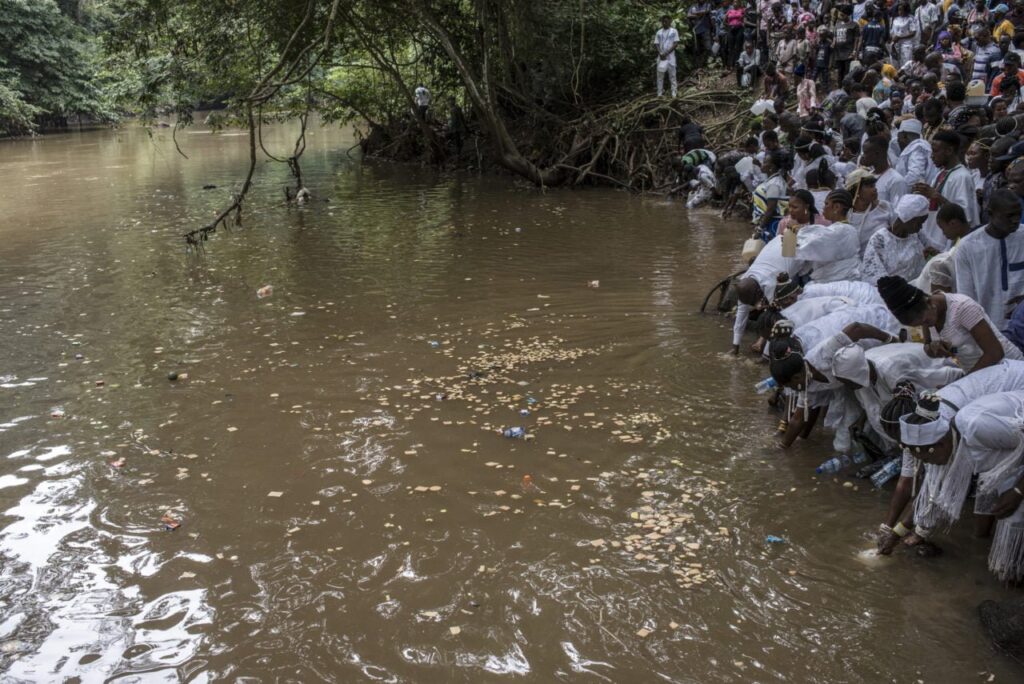
The Mystic Continuous Rainfall
History has it that there is a connection between the Osun-Osogbo festival and the continuous rainfall experienced during the period of the festival, especially within the southwestern parts of Nigeria. The rain is most of the time called the August rain, which is known to be heavy at intervals and also drizzling on a consistent basis.
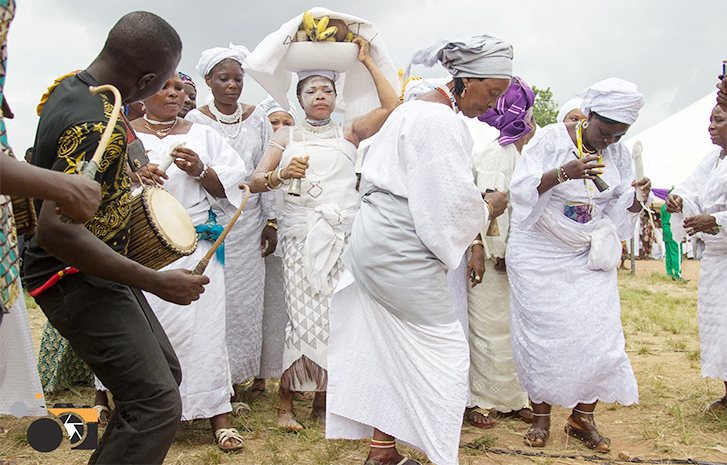
The Benefits of the Osun-Osogbo Festival
The festival has had a significant positive impact on Nigeria’s tourism industry. It gives the locals the chance to market their culture to travellers from all over the world and from within the nation.
The Osun-Osogbo festival also acts as a potent unifying force in Osogbo territory since it brings everyone together each year to celebrate the goddess, regardless of their various social, economic, religious, or political beliefs.
